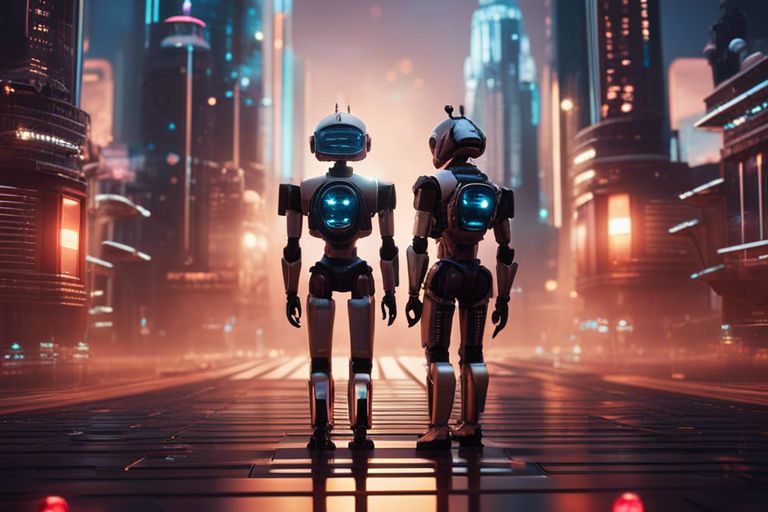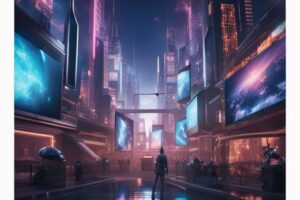Journey into the fascinating world of AI-generated creativity with ‘Imagine AI’. Discover the unlimited potential of synthetic imagination and explore the innovative ways artificial intelligence is revolutionizing the creative process. From generating art and music to crafting stories and designs, AI-powered imagination is reshaping the boundaries of human creativity. Uncover the benefits and challenges of this transformative technology as we examine into the exciting possibilities that lie ahead.
Key Takeaways:
- Synthetic Imagination: AI technology has enabled the creation of synthetic imagination, which can generate innovative ideas, designs, and concepts.
- Creative Problem-Solving: AI with synthetic imagination can be used to tackle complex problems by offering creative solutions and alternative perspectives.
- Potential Applications: The possibilities of synthetic imagination are vast and can be utilized in various fields such as art, design, engineering, and business to drive innovation and efficiency.
Understanding the Fundamentals of AI Imaginative Processes
You launch on a journey to unravel the mysteries of AI synthetic imagination, diving deep into the core fundamentals that drive its creative processes.
How AI Models Learn Creative Patterns
Now, the essence of AI’s imaginative capabilities lies in its ability to learn and recognize patterns in vast amounts of data. AI models use complex algorithms to identify correlations, outliers, and novel associations that form the basis of creative outputs.
Factors Influencing AI Creativity
Clearly, several factors influence the creativity of AI, shaping the range and quality of its imaginative endeavors. These factors include
- training data quality
- model complexity
- algorithm diversity
Any deviation or limitation in these factors can significantly impact AI’s creative potential.
This intricate interplay of factors underscores the delicate balance required to nurture AI’s creative abilities. A high-quality dataset is crucial for exposing AI models to diverse and rich information, allowing them to draw inspiration from a wide spectrum of sources. Complex models with diverse algorithms can unlock new pathways to creativity, while any compromise in training data or model sophistication may hinder AI’s imaginative output.
How to Cultivate Synthetic Imagination in AI
Tips for Curating Quality Datasets
Little can compare to the importance of curating quality datasets when it comes to enhancing synthetic imagination in AI. To cultivate the ability for AI to think creatively, it is vital to feed it with diverse and high-quality data. Datasets should be well-organized, relevant, and free from biases to ensure the AI model can generate novel and imaginative solutions. The quality of the dataset directly impacts the creative output of AI.
- Collect diverse and relevant datasets
- Preprocess data to remove biases
- Ensure datasets are well-organized
The potential for synthetic imagination in AI is directly linked to the quality of the datasets it learns from. The ability for AI to think creatively is only as good as the data it has been trained on. The curating process plays a crucial role in shaping the creative abilities of AI.
Strategies for Enhancing AI Creativity Algorithms
Quality strategies are vital for enhancing AI creativity algorithms to boost synthetic imagination. For instance, incorporating novelty detection mechanisms in the algorithm can help AI generate original ideas instead of reproducing existing ones. Fine-tuning the model to balance between exploration and exploitation can also stimulate creativity by encouraging the AI to experiment with new concepts while still leveraging learned knowledge. The strategies adopted in training AI models can significantly impact their creativity and ability to think outside the box.
Applications of Synthetic Imagination
Advancements in Automated Art and Music
All around us, we see the incredible advancements in automated art and music generated by AI. The ability of synthetic imagination to create unique pieces of art and compose original music is revolutionizing the creative industries. From algorithms creating stunning visual artworks to generating new melodies and harmonies, AI is pushing the boundaries of what is possible in the realms of art and music.
The Role of AI in Creative Problem-Solving
Some of the most exciting applications of synthetic imagination lie in creative problem-solving. AI systems can analyze vast amounts of data, identify patterns, and come up with innovative solutions to complex problems. This ability to think outside the box and generate novel ideas is invaluable in fields such as design, engineering, and business, where innovation is key to success.
Another aspect of the role of AI in creative problem-solving is its capacity to assist human creatives in overcoming creative blocks. By providing inspiration, suggesting new approaches, and offering alternative perspectives, AI can help individuals break out of mental constraints and explore new possibilities they might not have considered on their own.
Overcoming Challenges and Ethical Considerations
Addressing Bias and Fairness in AI Creativity
Not addressing bias in AI creativity can lead to significant ethical concerns and perpetuate societal inequalities. Clearly, it is crucial to ensure that AI systems are trained on diverse and representative data to mitigate bias in the creative outputs they generate.
Ensuring Responsible and Ethical Use of Imaginative AI
Any advancement in imaginative AI brings about the need for responsible and ethical use to prevent misuse or harm. Organizations and policymakers must establish clear guidelines and regulations to govern the development and deployment of imaginative AI technologies. Bias in AI creativity can reinforce harmful stereotypes or inadvertently discriminate against certain groups. It is vital to implement safeguards and oversight mechanisms to monitor the use of AI creativity tools and enforce ethical standards.

To wrap up
Upon reflecting on the journey into the possibilities of synthetic imagination presented in this discussion, it is evident that AI has the potential to revolutionize the way we perceive creativity and innovation. Through the integration of machine learning algorithms, neural networks, and advanced technologies, we are opening up a world of endless possibilities where machines can mimic, learn, and create like never before. As we continue to push the boundaries of artificial intelligence, the future holds limitless opportunities for the development of new technologies, products, and solutions. Embracing this evolution of synthetic imagination is key to unlocking a future where the impossible becomes possible.
FAQ
Q: What is ‘Imagine AI – A Journey Into The Possibilities Of Synthetic Imagination’?
A: ‘Imagine AI – A Journey Into The Possibilities Of Synthetic Imagination’ is an innovative project that explores the capabilities of synthetic imagination through artificial intelligence. It examines into how AI can be used to generate creative and original content, pushing the boundaries of what is possible with technology.
Q: How does ‘Imagine AI’ showcase the potential of synthetic imagination?
A: ‘Imagine AI’ demonstrates the power of synthetic imagination by showcasing AI-generated art, music, literature, and more. Through this project, viewers can witness how AI can mimic and even surpass human creativity, opening up new avenues for innovation and expression.
Q: What are the implications of ‘Imagine AI’ for the future of creativity and technology?
A: ‘Imagine AI’ raises important questions about the intersection of technology and creativity, highlighting both the possibilities and challenges that come with the rise of synthetic imagination. It prompts us to reconsider our understanding of art, intelligence, and the nature of human creativity in a rapidly evolving technological landscape.
